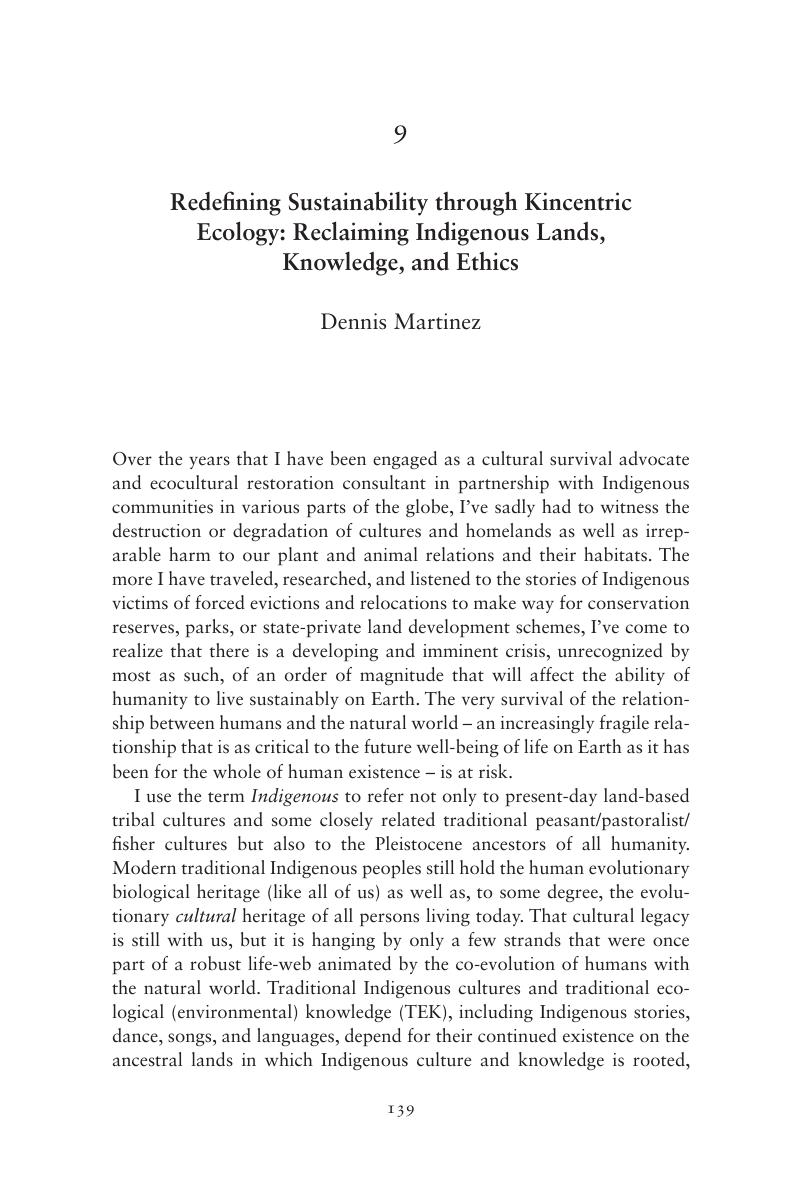 Traditional Ecological Knowledge
Traditional Ecological Knowledge Book contents
- Traditional Ecological Knowledge
- New Directions in Sustainability and Society
- Traditional Ecological Knowledge
- Copyright page
- Contents
- Editors and Contributors
- Preface
- Part I Introduction to Key Concepts and Questions
- Part II Bedrock
- Part III Extended Web
- 9 Redefining Sustainability through Kincentric Ecology: Reclaiming Indigenous Lands, Knowledge, and Ethics
- 10 Indigenous Food Sovereignty in Canada
- 11 The Radiant Life with Animals
- Part IV Global and Legal Implications of Indigenous Sustainability
- Index
- References
9 - Redefining Sustainability through Kincentric Ecology: Reclaiming Indigenous Lands, Knowledge, and Ethics
from Part III - Extended Web
Published online by Cambridge University Press: 21 September 2018
- Traditional Ecological Knowledge
- New Directions in Sustainability and Society
- Traditional Ecological Knowledge
- Copyright page
- Contents
- Editors and Contributors
- Preface
- Part I Introduction to Key Concepts and Questions
- Part II Bedrock
- Part III Extended Web
- 9 Redefining Sustainability through Kincentric Ecology: Reclaiming Indigenous Lands, Knowledge, and Ethics
- 10 Indigenous Food Sovereignty in Canada
- 11 The Radiant Life with Animals
- Part IV Global and Legal Implications of Indigenous Sustainability
- Index
- References
Summary

- Type
- Chapter
- Information
- Traditional Ecological KnowledgeLearning from Indigenous Practices for Environmental Sustainability, pp. 139 - 174Publisher: Cambridge University PressPrint publication year: 2018
References
Works Cited
- 10
- Cited by


